Atari Jaguar CD
Top 10 Best Atari Jaguar CD Games of All Time!
As its name implies, the Atari Jaguar CD is a CD-ROM add-on for the Jaguar. The system had a double-speed drive and used a proprietary disc format that could hold up to 790MB. (For reference, standard Jaguar carts topped out at 6MB.) The added storage capacity allowed for full-motion video and Red Book audio, but it’s not unfair to describe the Jaguar CD as the most unnecessary add-on of all time. The Atari Jaguar launched in 1993, but the console was already dead in the water by the time the CD add-on hit store shelves in 1995. Atari faced stiff competition from the Sega Saturn and the newly-minted Sony PlayStation, and the Jaguar CD was quietly discontinued before its first birthday. Only 13 games were released for the system, and only a handful were exclusive to the platform. Having played through the entire library, I now understand why the Jaguar CD was shaped like a toilet. This isn’t so much a list of “best” games as it a list of “least worst” games.
10
Dragon’s Lair
1995
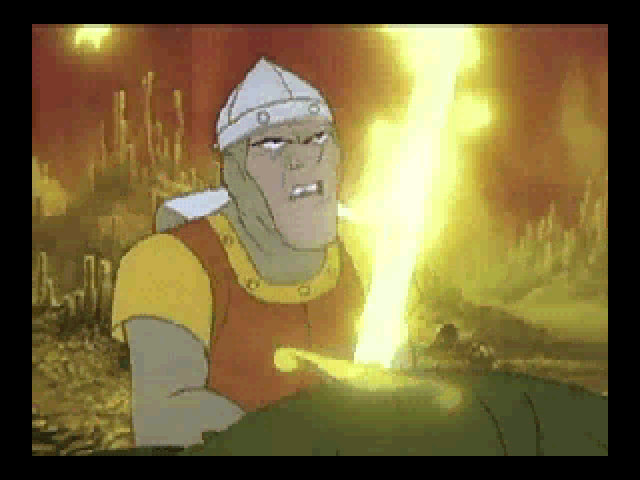
Dragon’s Lair took the gaming world by storm when it hit arcades in 1983. While most games of the era relied on primitive sprites or simple vectors, Dragon’s Lair was almost entirely comprised of full-motion video sequences. The cutscenes were animated by a team of ex-Disney employees lead by Don Bluth, and the game leveraged the storage capacity of the LaserDisc medium to create the world’s first interactive movie. Unfortunately, it wasn’t nearly as interactive as typical video games were. The game is focused on a daring knight who is tasked with rescuing a princess from an evil dragon. Players don’t have any direct control over their character, however, and the entire game unfolds like a series of quick time events. Each scene requires you to input certain commands at the right time in order for the story to progress, but it’s not always clear what command your supposed to use. A lot of trial and error is involved, and the game was clearly designed to eat quarters. On the flipside, the game has dozens of animated death scenes that are every bit as entertaining as the main story. Dragon’s Lair was one of the most influential arcade games of the early ’80s, and it’s the type of game that couldn’t have worked on a standard Jaguar cartridge. The picture quality is downgraded from the 1983 arcade game, but it’s hard not to appreciate the gorgeous animation. It barely qualifies as a video game, though, and you’d likely get just as much from watching a YouTube longplay as you would from actually playing the game.
9
Blue Lightning
1995
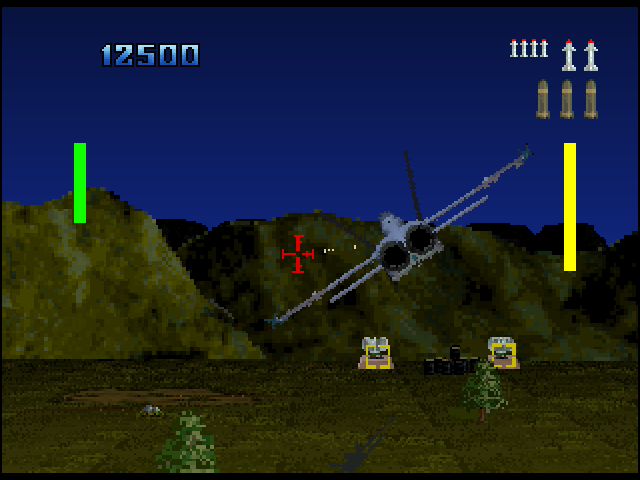
Released in 1989, Blue Lightning is an air combat game that helped highlight how powerful the Atari Lynx was. The game looked better than the vast majority of NES and Master System releases, and it even compared favorably to many Genesis and TurboGrafx games! I’m still impressed by the scaling effects and sheer number of enemy fighters that the game throws at you. The follow-up should have showcased the capabilities of the Jaguar CD in a similar fashion, but it only served to underscore how thin its library was. Despite being announced as a sequel, the Jaguar CD version of Blue Lightning was basically a remake of the Lynx game. The game went through a troubled development cycle, however, and the end result looks worse than the original in some ways. The digitized backgrounds were especially egregious, and the art direction was all over the place. The game obviously needed some more time in the oven, but Atari rushed the game to market and went so far as to include it as a pack-in title for their newly-minted add-on! In the same month that PlayStation owners were being introduced to the first Ace Combat, Jaguar CD owners were stuck with a rushed port of a handheld game that was already six years old! Blue Lightning feels like a poor man’s After Burner, but at least it’s not an “interactive” movie!
8
Hover Strike: Unconquered Lands
1995
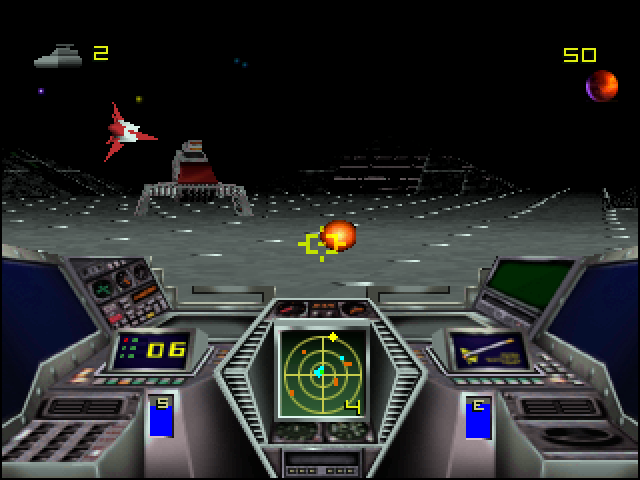
Hover Strike: Unconquered Lands is a three-dimensional shooter that places players into the cockpit of a heavily-armed hovercraft. You’ll visit many planets in a bid to overthrow oppressive space pirates, so it’s fortunate that the hovercraft can safely navigate across various terrain types. Each mission drops players behind enemy lines and tasks them with destroying specific targets. You’ll find opposition in the form of enemy turrets and low-flying aircraft, and you’ll also have the opportunity to collect power-ups and acquire new sub-weapons along the way. Unfortunately, the action is lackluster, the level designs are uninspired, and the mission objectives are repetitive. Although the hovercraft moves along at an impressive clip, the game feels sluggish and the controls are awkward. (Selecting weapons with the Jaguar’s keypad is downright cumbersome.) The biggest issue with the game is that it feels redundant. The original Hover Strike was released on the Jaguar six months before this unnecessary remake. The CD version has enhanced textures and dynamic lighting effects, but the core gameplay is largely unchanged. Ultimately, a few FMV cutscenes and improved audio weren’t enough to justify the game being re-released so soon after the original version hit. It’s not outright horrible, however, and that’s good enough to warrant a place on this countdown!
7
World Tour Racing
1997
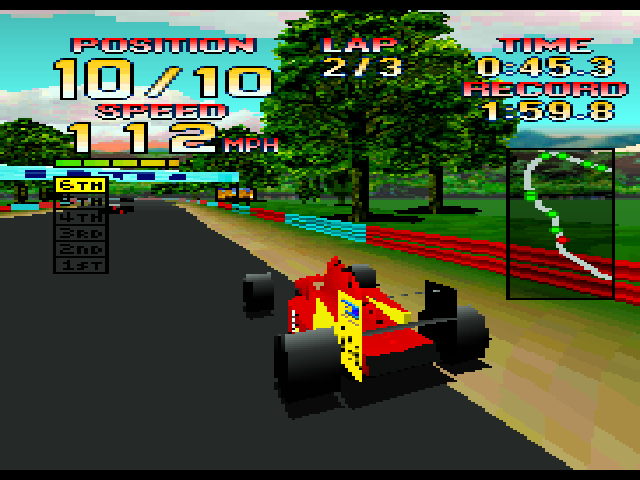
World Tour Racing is a Formula One racing video game with gouraud-shaded polygon models and environments. You can choose whether to race the CPU in a single race or compete in a full Grand Prix circuit, and the game also has a split-screen mode for anyone who would rather race against a human opponent. The framerate is fairly choppy, however, and you’re likely to lose control of your vehicle as a result. (On the bright side, you’ll have plenty of time to admire the car damage!) World Tour Racing is standard fare as far as racing games go, and there’s nothing more dull than a mediocre F1 game. Unfortunately, World Tour Racing simply doesn’t offer much in the name of creativity. It’s not objectively bad, but the most compelling feature is its hidden cheat code that allows you to race as a bus. The game was originally planned for a 1995 release, but the already-dated game felt like a relic of the past by the time it was finally released in 1997. It doesn’t hold a candle to Sega’s Virtua Racing, and there’s no real reason to revisit the game today. It compares favorably to other Jaguar racers like Checkered Flag or Club Drive, but that’s not exactly a ringing endorsement.
6
Vid Grid
1995
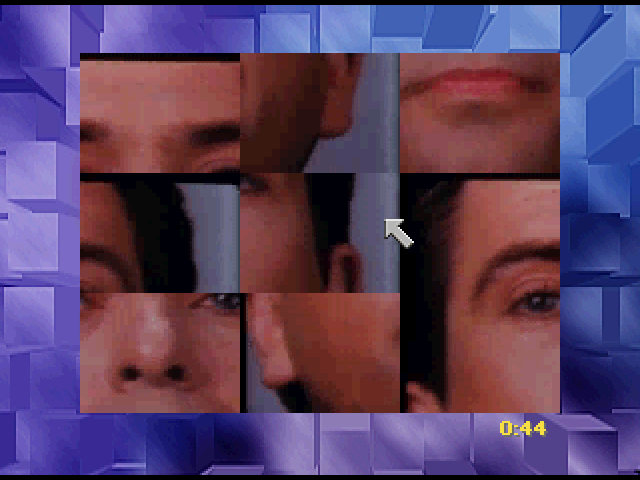
Vid Grid is a tile-matching puzzle game that was included as a pack-in title for the Jaguar CD. The object of the game is to arrange a grid of tiles in order to unscramble various music videos. This is easier said than done, however. Music videos are defined by quick cuts and surreal imagery, after all, so you can’t always be sure what you’re looking at. You’ll start with nine tiles on a 3×3 grid, and the complexity ramps up as you progress. The playing field will eventually expand to a 6×6 grid, for example, and some of the pieces will be displayed upside down! Some levels will even re-scramble the tiles if you make a mistake. In the early goings, players can freely drag-and-drop tiles into position and swap them out as they see fit. After this option is taken away, the stages devolve into typical slide puzzles. I’ve not especially fond of slide puzzles under normal circumstances, and I’m certainly not fond of them when there are moving images involved! The selection of music videos almost makes the experience worthwhile, and I was impressed by how many great tunes were included. Era-defining videos like Peter Gabriel’s Sledgehammer and Nirvana’s Smells Like Teen Spirit are featured along with eight other tracks. Solving slide puzzles in order to watch music videos sounds like a ridiculous concept in a post-YouTube world, but it was a novel concept in 1995. Kids would watch MTV for hours for a chance to see Alicia Silverstone slutting it up in Aerosmith videos, so I can kind of understand the appeal of Vid Grid. It wasn’t exactly a killer app, but it’s an effective showcase of the system’s video playback capabilities.
5
Myst
1995
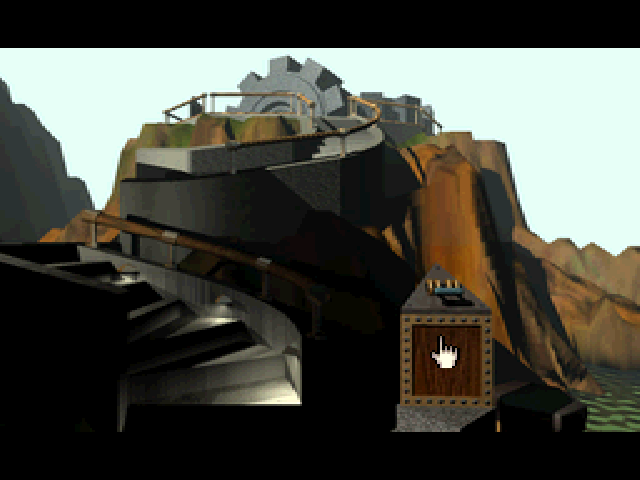
Myst is a landmark graphical adventure game that was originally released on Macintosh computers in 1993. It went on to become one of best selling PC games of all time, and it contributed to the early success of the CD-ROM format. The game uses a first-person perspective and allows players to interact with their surroundings via a point-and-click interface. Although the animation is limited, the developers were able to create an immersive world through the extensive use of pre-rendered 3D graphics. The synthesized music contributed further to the haunting atmosphere, and the soundtrack holds up remarkably well after all these years. Myst transports players to a mysterious island and inundates them with mind-bending logic puzzles. Unfortunately, the game is too vague for its own good and the story lacks any sense of direction. Players will have an opportunity to visit five different worlds during their adventure, but the developers acknowledge that the majority of them never made it beyond the first island! Myst looked really awesome in magazines and opened the gates for a new sub-genre of adventure games. The game is needlessly cryptic, however, and the lack of mouse support on the Jaguar CD makes the trial-and-error puzzles seem all-the-more torturous.
4
Baldies
1995
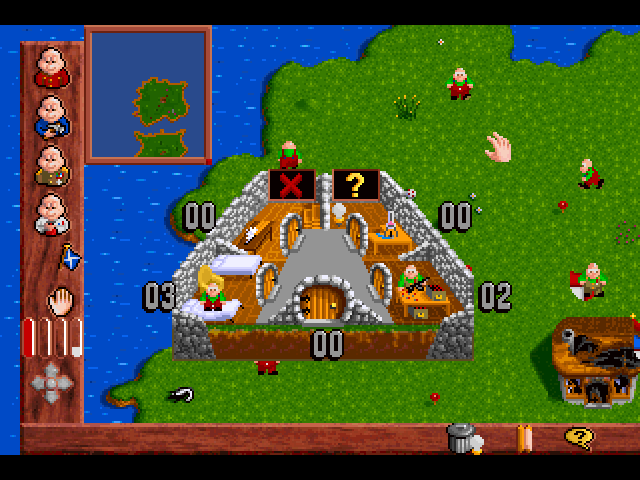
I was expecting Baldies to be “Babies First RTS,” but it’s more involving than its childish exterior would suggest. The game gives players control over a community of bald people (called Baldies) who are tasked with eradicating neighboring populations of hairy people (called Hairies). Although the premise is infantile, there are a lot of elements beneath the surface. Players are given four types of Baldies to manage. Workers can terraform the land, builders can construct new buildings, soldiers can take up arms against their rivals, and scientists can develop new tools. The Baldies can breed with each other to increase their numbers, and they can learn new skills as well. The game lacks any multiplayer support, but the campaign is surprisingly long. There are dozens of levels in five unique worlds, and I loved how each world had its own theme. (The characters wear winter attire when you’re in snow-covered areas, for instance, and you’ll build igloos instead of houses.) The most interesting thing about the game is the assortment of weapons at your disposal. You can catch your enemies by setting bear traps or digging pitfalls, but you’ll eventually have access to exploding cows and rampaging bunnies! (You’ll even gain the ability to control the weather!) The game has severe balancing issues, however, so there’s no reason to use most of the gadgets after the novelty wears off. The learning curve is fairly steep and the winning strategies feel more like exploits, but there are a lot of creative ideas on display in Baldies.
3
Battlemorph
1995
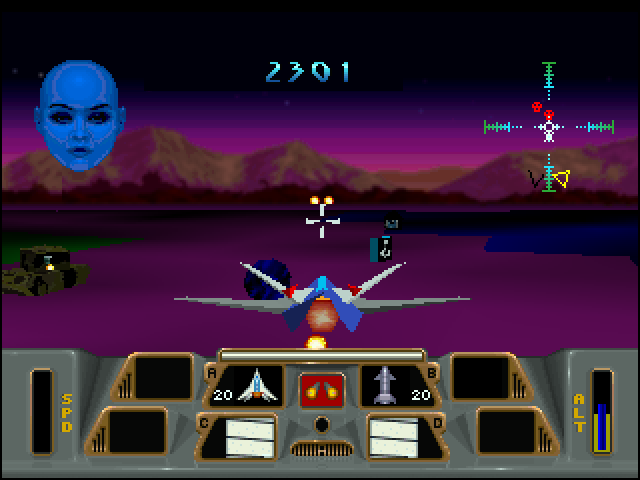
Cybermorph was a free-roaming 3D shooter that was packed in with the Jaguar when it launched in 1993. The game was panned by critics for a number of reasons, and it drew unfavorable comparisons to StarFox on the Super NES. Fortunately, Battlemorph improved upon its foundation in nearly every way. The graphics are more detailed, the framerate is smoother, the missions are more varied, and the music is better. The stages in Battlemorph are generally more complex than they were in Cybermorph, and they are full of hidden tunnels, secret rooms, and underwater areas to explore. You’ll have an opportunity to visit dozens of planets as you battle hostile alien forces, and I was surprised by how interactive the environments were. Almost everything is destructible, and this opens up so many avenues when it comes to combat. Atari marketed the Jaguar as a 64-bit console, but Battlemorph was one of the few games that actually tried to use the horsepower. The developers clearly learned a lot while making Cybermorph, and it’s fortunate that they were given a chance to implement their new ideas. Battlemorph is the game that Cybermorph should have been from the start.
2
Primal Rage
1995
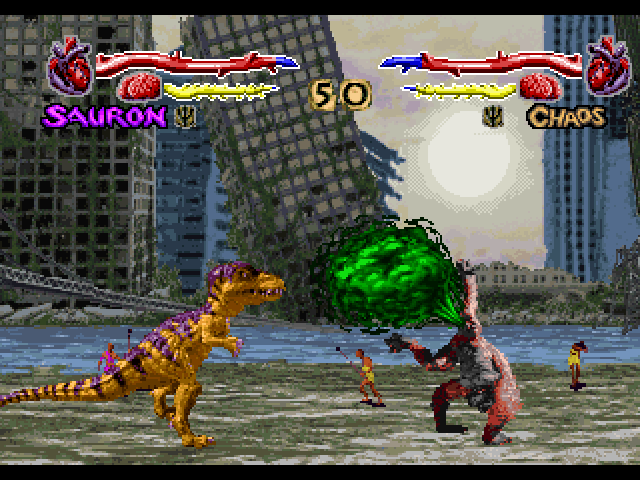
Fighting games like Street Fighter II and Mortal Kombat defined the entire industry for a number of years in the 1990s, but Primal Rage is easily the best fighting game ever grace an Atari console. Primal Rage is best-known for a character roster that includes vicious dinosaurs and giant ape-like creatures. The game takes inspiration from Mortal Kombat in a number of areas, and similarities can be seen in its over-the-top violence and fatality maneuvers. Many of the characters in Primal Rage borrow special moves and personality traits from iconic Mortal Kombat characters. This isn’t to say that the game doesn’t bring anything new to the table. One notable innovation is the presence of human tribesmen that sashay onto the battlefield. Players have the opportunity to devour these humans to increase their health, and they can even play human volleyball with them! The game is also filled to the brim with crude humor, and several of the special moves involved farting and belching. The graphics in the Jaguar CD version of Primal Rage were watered-down from the arcade original and several frames of animation were cut, but the stop motion aesthetics are still stunning in their own right. The mid ’90s was defined by fighting games, and Primal Rage was literally the only one that could be played on the Atari Jaguar CD.
1
Iron Soldier 2
1997
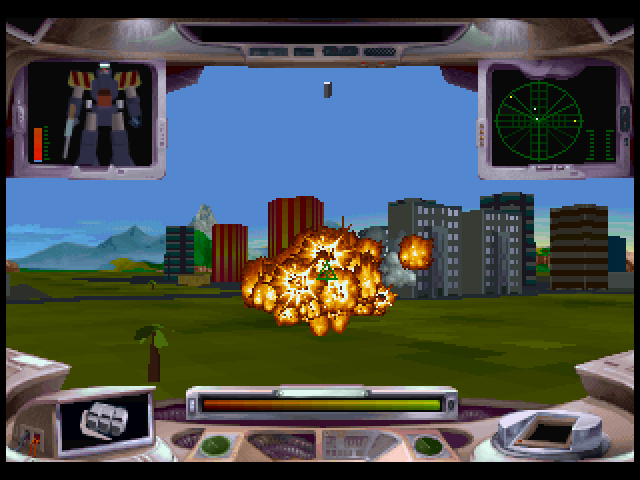
Like its predecessor, Iron Soldier 2 is a mech-based game that uses polygonal graphics and employs a first-person perspective. The first Iron Soldier was one of the most effective showcases of the Jaguar’s capabilities, and it even found a use for the its ill-conceived telephone-esque keypad! The sequel was released in for both the Atari Jaguar and the Atari Jaguar CD, but the disc version featured FMV cutscenes and Red Book audio. (For some reason, the cartridge version was completely void of music during the gameplay segments.) The game itself is fairly straightforward, and the missions typically require you to destroy landmarks while fending off enemy tanks, choppers, and attack planes. There are several cool weapons to use in the game – including Gatling guns and rocket launchers – and you can also choose to smash enemies with your robot’s fists if you’re so inclined! The controls take a while to get used to and some of the missions are extremely frustrating, but Iron Soldier 2 is an ambitious game that deserves a lot of praise for attempting to use the Jaguar’s power. Although the game moves along at a slow pace, the animation is surprisingly smooth and the explosion effects are impressive. If you like iron and soldiers, you’ll love this game!


Do you agree with this list? Let us know what you think by leaving a comment below. Your opinion matters!